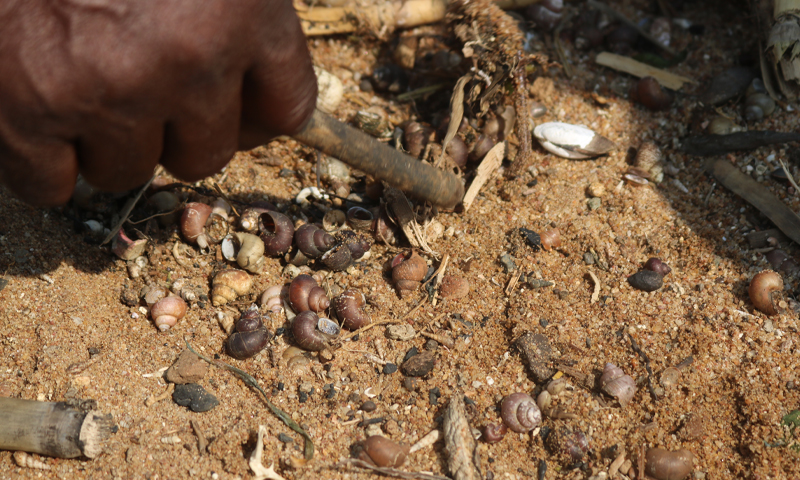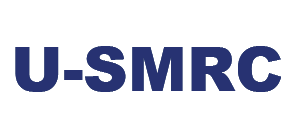The Uganda Schistosomiasis Multidisciplinary Research Center (U-SMRC) has been established to build expertise and understanding of the underlying biological determinants of severe schistosomal morbidity and to develop and identify appropriate interventions for prevention and management of this important disease.

OUR SPECIFIC AIMS
To compare early-life Schistosoma mansoni (Sm) infection and Sm-specific immune responses between Lake Albert (LA) and Lake Victoria (LV) regions and identify co-exposures that modulate Sm-specific immune responses and morbidity risk.
NEWS & INSIGHTS
News
How Namayingo Communities are Standing by U-SMRC through Delays
In the quiet villages of Namayingo District; Buyondo, Maruba, Bumeru A, and Bumeru B communities, something quietly remarkable is happening. Despite a pause in data collection due to funding delays, over 95% of enrolled study participants are ready and waiting for their follow-up procedures and recruitment of adult participants for research on how bilharzia makes them sick. One would wonder why this is so? The answer to this is simply because trust has already been built. When the Uganda Schistosomiasis Multidisciplinary Research Centre (U-SMRC) returned to Namayingo in May 2025 for site preparation and participant mobilization for the final data collection visit, the expectation was simple: reconnect, set up, and move forward. However, what the team encountered was something deeper. From village chairpersons who welcomed the study team back, to Village Health Teams (VHTs) who helped trace absent participants, the community’s readiness was unwavering. Even when one of the most active VHT in Bumeru B had sadly passed away, the community ensured a quick handover to a replacement, keeping the study on track. Guardians expressed willingness to support one last visit for their children, and even those who had migrated said they would return, if only transport could be facilitated. Household visits to confirm participant availability in the communities What stood out was not just the numbers, though they were impressive. Out of 220 participants, 209 were fully available, and most of the rest were reachable. What truly mattered was the attitude. “People asked when we were starting again,” said Christopher Zziwa, Acting Study Coordinator. “There’s a sense that this research belongs to them too.” In a region long burdened by Neglected Tropical Diseases (NTDs), including schistosomiasis, the community knows the value of research. U-SMRC’s earlier engagement with leaders and the use of local language in mobilization efforts fostered not only understanding but owner-ship. Meeting with Namayingo District Leadership This is not just a story about scientific preparedness or community engagement; it’s a story of loyalty in the face of uncertainty. In Namayingo, science has a home. Moreover, the people? They are still here, ready to continue the journey.
Blog
From Lakeside Tales to Lab Bench Truths
If you told me a year ago that I, Matthew Odongo, would be riding a bike through cobblestone streets in Europe, eating Stroop waffles, and analyzing immune cells in a high-tech lab all in the same week, I’d have laughed and asked, “Me? In Europe?” But in October 2024, that dream became a reality when I packed my bags (and my pipettes, metaphorically speaking) and flew from Uganda to the Netherlands to join the Parasitology Department at Leiden University Medical Center (LUMC). Touching down in the Netherlands was like stepping into a painting, except this one had top-tier research labs, endless canals, and more cheese than I knew what to do with. This was my first time in Europe, and every moment felt like a beautiful blur of discovery. I was warmly welcomed into the Parasitology Department at LUMC, led by the brilliant Prof. Maria Yazdanbakhsh. Under the mentorship of Dr. Bart Everts (my Dutch scientific compass and co-supervisor), I dove headfirst into the fascinating world of immunoparasitology. My PhD: Schistosomiasis, Lakes and the mystery of Morbidity Back home in Uganda, my PhD journey is powered by the Uganda Schistosomiasis Multidisciplinary Research Centre (USMRC). I’m exploring something that’s puzzled scientists for years: why do people living near Lake Albert and Lake Victoria, both hotspots for schistosomiasis experience the disease so differently? Some develop serious complications like liver fibrosis, while others, despite being infected, seem to skate through with less severe symptoms. My mission? To uncover the biological clues, especially the immune system responses and metabolic factors that might explain these differences. My Ugandan mentors (Drs. Gyaviira Nkurunungi, Samuel Kyobe, Bernard Bagaya, and the ever-inspiring Prof. Alison Elliott) are my research dream team. They’ve guided me with wisdom, support, and the occasional reality check when I wanted to test 500 samples in a single afternoon. At LUMC, I was like a kid in a scientific candy store. I trained in high-dimensional flow cytometry (imagine looking at immune cells from 20+ angles at once), practiced cell culture techniques, and got my hands on powerful analysis tools like OMIQ; think of it as Excel on steroids for immunologists. A snap in the Flow cytometry Core Facility at the LUMC- analyzing metabolic flow samples Each skill I picked up felt like adding a superpower to my PhD toolkit. I could now slice and dice immune data in ways that gave me fresh insights into schistosomiasis morbidity across regions. It was intense, exhilarating, and—dare I say it—fun. Leiden is the kind of city that makes you want to write poetry or publish a paper, or both. Its centuries-old university has hosted legends like Descartes and Einstein. And now… me! Wandering the canals, popping into cozy cafes, and walking past historic buildings gave me a deep sense of connection to generations of thinkers who’ve asked bold questions. It reminded me that research even on a tiny parasite can have a big impact. Canal Boat tour of Amsterdam Outside the lab, I went full tourist. I marveled at towering dinosaur skeletons at the Naturalis Biodiversity Center (my inner child was screaming). I cruised through Amsterdam’s canals and stood quietly outside the Anne Frank House a powerful, humbling moment. At the Naturals Biodiversity Centre (Natural Science Museum) And of course, I made friends! Scientists from all over the world shared laughs, meals, and sometimes troubleshooting tips over coffee. These connections both professional and personal are now part of my global scientific village. Coming Home with More Than Data Returning to Uganda, I brought back more than flow cytometry plots. I returned with sharper skills, a wider worldview, and a heart full of gratitude. My research is no longer just about answering a question in Uganda; it’s about contributing to the global conversation on neglected tropical diseases. To every young African scientist reading this: the world needs your voice, your curiosity, your questions. Don’t wait for perfect conditions, go for it. Apply for that opportunity. Collaborate. Travel. Share your story. Science is better with you in it. To my mentors; Prof. Yazdanbakhsh, Dr. Everts, Prof. Elliott, and Drs. Gyaviira, Kyobe, and Bagaya—and the teams at LUMC, UVRI, and Makerere: thank you for believing in me. Let’s keep doing the work that matters.
News
Special Seminar on Advancing Schistosomiasis Control through Hybridization Research
A distinguished collaborator and senior researcher from the Royal Museum for Central Africa in Belgium, Dr. Tine Huyse, recently visited the Uganda Schistosomiasis Multidisciplinary Research Centre (U-SMRC), an opportunity to strengthen ongoing partnerships and deepen discussions around molecular approaches to schistosomiasis control. During her visit on Thursday, 16 May 2025, Dr. Huyse delivered an engaging seminar on "schistosome hybridization," a topic at the frontier of parasite evolution and disease control. Her talk shed light on how genetic mixing between different schistosome species could influence transmission patterns, diagnostic accuracy, and treatment effectiveness. Dr. Tine Huyse delivers a seminar on schistosome hybridization to researchers at U-SMRC. “Hybridization among schistosomes has important implications for transmission dynamics, diagnostics, and treatment strategies,” she explained. “Understanding how these species are evolving and adapting is essential if we are to design effective and sustainable control programmes.” The session sparked engaging discussions among the scientists, especially on the potential of molecular tools to enhance schistosomiasis surveillance and control systems in Uganda. Following the seminar, Dr. Huyse toured the state-of-the-art snail laboratories, which play a critical role in identifying and monitoring the intermediate host snails of Schistosoma parasites. These labs support research on the ecology, genetics, and population dynamics of snail vectors, essential components in understanding local transmission and piloting innovative control strategies. Dr. Huyse interacts with our PhD students in the snail lab. The visit highlighted the importance of interdisciplinary collaboration and international knowledge exchange in tackling complex global health issues. Dr. Huyse’s insights are expected to inform ongoing projects at U-SMRC focused on hybrid detection, parasite-host interactions, and the development of molecular diagnostics. U-SMRC continues to position itself as a regional hub for integrated research and innovation in the fight against schistosomiasis and other NTDs. Dr. Huyse’s visit is part of a broader effort to strengthen global research networks and drive evidence-based interventions in endemic communities.
CAREER DEVELOPMENT
Welcome to the Career Development section of our website, where we are excited to showcase the diverse and impactful projects undertaken by our talented PhD fellows.
In this section, we provide a glimpse into the cutting-edge research our PhD fellows are engaged in, highlighting their innovative ideas, and the potential implications of their work.

Partners
This project is funded by the National Institute of Allergy and Infectious Diseases, part of the National Institutes of Health, under award U01AI168609.



